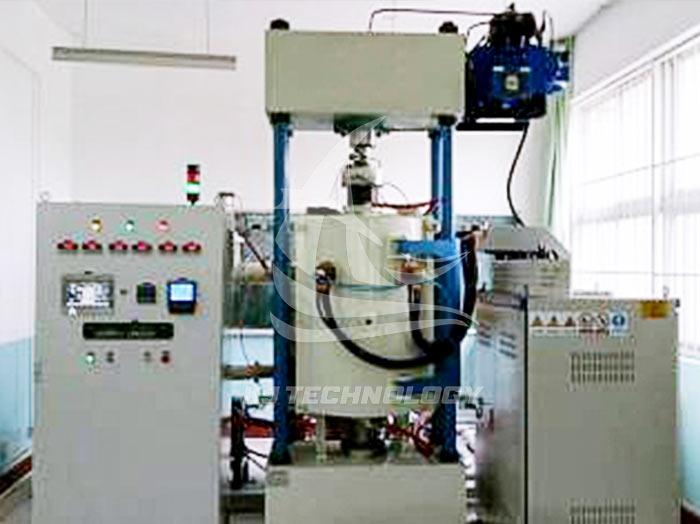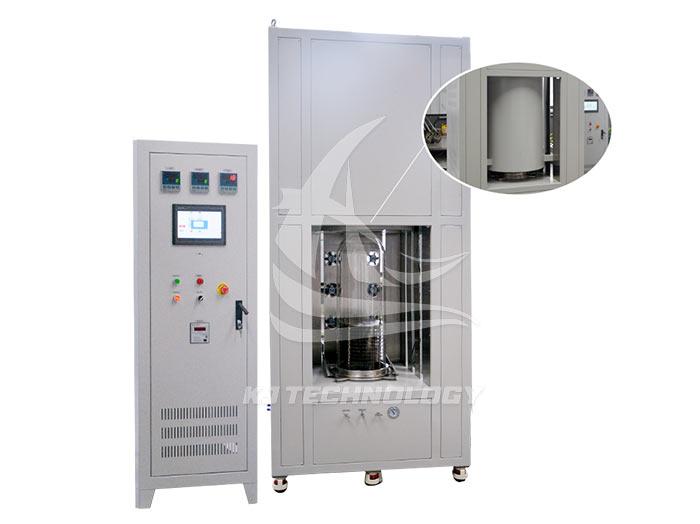High vacuum brazed ceramics
 10-31-2025 Author: KJ technology
10-31-2025 Author: KJ technology
High vacuum brazing electric furnace can efficiently and high-quality brazing various ceramic materials, including aluminum oxide (Al ₂ O3) ceramics, silicon nitride (Si ∝ N ₄) ceramics, zirconium oxide (ZrO ₂) ceramics, silicon carbide (SiC) ceramics, etc. Here are some specific application cases and technical points:
1. Brazing of Aluminum Oxide (Al ₂ O ∝) Ceramics
Brazing with stainless steel
Process: A material research institute in Chongqing metalizes Al ₂ O Ⅲ ceramics using Mo Mn method (screen printing molybdenum manganese paste, 1500 ℃ sintering infiltration, nickel electroplating), and then vacuum brazing with 304 stainless steel.
Solder: AgCu28Ni1.5 alloy powder.
Parameters: Brazing temperature 830 ℃, insulation for 15 minutes.
Result: The joint passed the 500 ℃ × 48h high-temperature test, and the sealing performance met the requirement of helium leakage rate<4 × 10 ⁻⁴ Pa · m ³/s.
Brazing with aluminum alloy
Process: A university in Harbin uses Ag Cu Ti powder to activate the surface of Al ₂ O Ⅲ ceramics. After 880 ℃/10min active metallization treatment, it is vacuum brazed with 5005 aluminum alloy.
Solder: Al Si solder foil.
Parameters: Heating rate of 15 ℃/min, brazing temperature of 600~620 ℃, holding time of 5 minutes, cooling rate of 10 ℃/min, vacuum degree>1.0 × 10 ⁻³ Pa.
Result: The shear force of the joint reached 15MPa.
2. Brazing of Silicon Nitride (Si ∝ N ₄) Ceramics
Brazing with 40Cr steel
Problem: Using BAg72Cu solder directly cannot connect.
Solution: Place a 0.1mm pure titanium foil as the activation layer between the two, and apply pressure using a molybdenum or GH44 high-temperature alloy elastic fixture.
Parameters: Vacuum degree 5 × 10 ⁻³ Pa, heated to 750 ℃ for 10-20 minutes, working vacuum degree>2 × 10 ⁻² Pa, brazing temperature 820~850 ℃, insulation for 3-5 minutes.
Result: The tensile strength of the joint reached 208MPa.
3. Brazing of Zirconia (ZrO ₂) Ceramics
Brazing with metals
Process: After surface spraying with nickel or molybdenum, silver based, copper based, or gold based brazing materials are selected for vacuum brazing.
Result: The joint has high strength and is suitable for high temperature environments.
4. Brazing of Silicon Carbide (SiC) Ceramics
Direct brazing technology
Solder: Active solder containing Ti or Zr (such as Ag Cu Ti system).
Features: No need for metallization pretreatment, simplified process, meets high temperature usage requirements.
Application: Direct brazing of ceramics and metals, ceramics and ceramics, ceramics and graphite, etc.
Composite brazing material alleviates residual stress
Problem: There is a large difference in thermal expansion coefficients between metal brazing materials and ceramics, which can easily generate residual thermal stress during cooling, leading to cracking.
Solution: Add low expansion coefficient materials (such as SiC, Si ∝ N ₄, Al ₂ O ∝ micro nano particles, or Mo, W metal particles) to the brazing material to make composite brazing materials.
Effect: Relieve residual stress and improve joint performance.
5. Technical advantages of high vacuum brazed ceramics
Avoid oxidation: The vacuum environment prevents ceramics and metals from oxidizing at high temperatures, ensuring the quality of the joint.
Wettability improvement: Active brazing materials (containing Ti, Zr, etc.) improve their wettability to ceramics through chemical reactions, achieving metallurgical bonding.
High temperature stability: Ceramic joints pre treated with metallization can withstand temperatures up to 1000 ℃.
Process flexibility: Suitable for connecting dissimilar materials (such as ceramic metal, ceramic ceramic) to meet complex structural requirements.
6. Typical application areas
Electronic packaging: Vacuum brazing of ceramic packaging shell, with good airtightness and high reliability.
Aerospace: Brazing of engine components such as honeycomb seals and turbine guides to improve manufacturing accuracy and performance.
Power electronics: Active metal brazing (AMB) of ceramic coated copper substrates for IGBT module packaging to improve thermal conductivity and reliability.
Tool manufacturing: Brazing of diamond tools (such as surface mounted and impregnated tools), widely used in industries such as stone, woodworking, aerospace, and military.








